- At URSB, you will receive either a Certificate of Registration (if registered in your own names or Business Name or incorporated outside Uganda) or Certificate of Incorporation if registered as a Limited entity. This will enable you to register and get a Tax Identification Number (TIN) from URA, either as an individual or Non-Individual.
A business registration certificate from URSB is a requirement before registration for taxes with URA. Taxation in the health and medical sector depends on your legal registration status with URSB. Once you acquire a TIN then you must always use it when transacting with Uganda Revenue Authority for tax purposes.
TIN stands for Tax Identification Number. It is a 10-digit number which acts as an account of a taxpayer with Uganda Revenue Authority (URA). All taxpayers are required to quote this number in all their communications with URA and business transactions.
A TIN is obtained free of charge and therefore no one should charge you for it.
- For an individual: A National ID or any two of the following identification documents; Village ID, Employment ID, Passport, Driving Permit, Voter’s Card, Bank Statement, Work Permit, Financial Card, Visa, NSSF Card, etc. This is also applicable to company directors
- For an individual with business, a business registration certificate is required.
- For a non-individual: Certificate of Incorporation/certificate of registration, Company Form 20 showing the Directors of the company, and any other legal documents that confirm existence.
- In case the directors do not have TIN’s, then their application(s) must be submitted together with the company application form under “group registration”.
- A valid email address and a mobile telephone number
- A referee – any person known to the applicant and has a TIN
- An employee shall attach proof of employment
1. Through the URA Web portal:
- Visit the URA web portal
- Download the appropriate registration form (Individual or Non
Individual),
- Complete the form by filling in the mandatory fields (boxes)
- Upload and submit online the completed form
- Receive an acknowledgment notice
- Print a copy of the form and sign it and together with the necessary attachments submit to the nearest URA office.
- Receive notification of approved or rejected TIN application
- Print TIN Certificate sent to the email registered with URA from anywhere
- Visiting a URA designated office
In case a taxpayer cannot register online, he or she can walk into any of the URA offices or One Stop Centre located in any Municipality or KCCA division and assistance shall be provided to complete the registration process.
Ensure that you move along with the necessary attachments as listed above. In case of failure to do any of the above, call the Contact Centre:
0800217000 or 0800117000 (Toll free), Whatsapp 0772140000 or send an email to services@ura.go.ug
- Acquiring a TIN enables you to:
- Import or export goods within and outside Uganda.
- Claim tax benefits that accrue to you e.g. tax refunds etc.
- Access bank loans.
- Acquire a trading license from Local Government / KCCA to undertake business in their jurisdiction.
- Register your Motor Vehicle
- Process land transactions above 50 Million Shillings.
- TIN acts as a security measure on transactions regarding some assets e.g. already validated motor vehicles, titled land since a notification is automatically sent to the owner’s TIN account and registered email.
NOTE:
A local authority, government institution or regulatory body shall not issue a license or any form of authorization necessary for purposes of conducting any business in Uganda to any person who does not have a Tax Identification Number including one issued by foreign tax authorities with whom Uganda has a tax treaty or agreement for the exchange of information.
| Rights | Obligations |
| You have a right to equity: • Tax laws and procedures shall be applied consistently to you • All your tax affairs will be handled with impartiality • You and your agent(s) shall be presumed honest until proven otherwise • You shall always pay the correct tax • Your tax affairs shall be kept secret and tax information in our possession shall be used in accordance with the law. • You and your authorized agent(s) shall be provided with clear, precise and timely information • You will receive courteous and professional services at all times | • Ensure that you voluntarily register with Uganda Revenue Authority as a Taxpayer. • File correct Tax Returns, Customs Entries or any forms relating to taxes and other revenue. • Pay the correct tax at the right time and place as required by the relevant laws. • In handling your tax matters, you and or your appointed agent(s) shall be expected to deal and cooperate only with the Authority’s authorized staff. • Be honest with URA. • Quote your Tax Identification Number (TIN) for all dealings with URA. • Comply with all the taxation requirements and regulations. • Make full disclosure of information and correct declaration of all transactions at all times. • Not indulge in any form of tax evasion and other illegal practices. • Request for a proper receipt for all your purchases and keep records properly. |
- It is very important for taxpayers to;
- Keep proper records of all business transactions in the English language;
- Keep records such that it is easy to determine their tax liability; – Keep records for five years after the end of the tax period to which they relate for future reference.
- In case a record is necessary for a proceeding that started before the end of the 5 year period, a taxpayer shall keep the record until the end of the proceedings.
- The records kept should contain sufficient transaction information and should be saved in a format that is capable of being recovered and converted to a standard understandable record format.
- A taxpayer who wishes to keep records in a different language or currency shall apply in writing
With clear reasons to the commissioner for permission.
- Where a record is not in English, the taxpayer will be required to meet the cost of translation into English by a translator approved by the Commissioner.
However, the taxpayer shall file a tax return or provide other correspondence with the Commissioner in English.
A person who no longer fulfills the registration conditions may, in the prescribed manner, apply to the Commissioner to be deregistered.
• The Commissioner shall by notice in writing, deregister a person if he is convinced that the person no longer satisfies the registration conditions
A person who temporarily closes business with an intention of resuming, shall not be deregistered but apply to the commissioner in writing to have his TIN deactivated and later on reactivated when they resume business.
The penalty for a person who fails to apply for registration, cancel a registration or notify the Commissioner of a change in registration or circumstances is;
- a fine not exceeding Shs. 3,000,000 or imprisonment not exceeding six years or both on conviction if the failure/act was done knowingly or recklessly.
- to a fine not exceeding Shs. 1,000,000 or imprisonment not exceeding two years or both on conviction in any other case.
• The penalty to be paid under this section shall be recovered and collected as unpaid tax.
A TIN is personal to the person to whom it has been issued and shall not be used by another person.
• A person who uses a false TIN on a tax return or other document prescribed or used for the purposes of a tax law, knowingly or recklessly or not, commits an offence and is liable on conviction to a fine not exceeding Shs. 3,000,000 or imprisonment not exceeding six years or both.
The penalty for knowingly or recklessly or not failing to maintain records as required under any tax law is a fine not exceeding Shs. 2,000,000 or imprisonment not exceeding six years or both on conviction.
Note: A taxpayer, who cannot effectively handle his tax matters, can appoint a tax agent to transact with URA on his/her behalf.
A tax agent is a person licensed by the Tax Agents Registration Committee (TARC) to handle tax-related issues on behalf of the taxpayer. An agent can be an individual, partnership, or company. An agent engages in the following activities on behalf of the taxpayer:
- Preparation, certification, and filing tax returns, or other statements or reports required by the Authority.
- Preparation of requests for ruling, petitions for reinvestigation, protests, objections, requests for refund or tax certificates, compromise settlements and/or reductions of tax liabilities and other official papers and correspondences with the Authority.
- Attending meetings and hearings on behalf of the taxpayer in all matters relating to taxpayer rights, privileges or liabilities under the laws administered by the Authority.
Taxpayers who need tax advisory services.
Income Tax – Section 4 of the Income Tax Act imposes income tax for each Year of Income on every person who has chargeable income for a given year of income.
a) Individual Income Tax.
The income tax rate for individuals depends on the income bracket in which the individual falls. Resident individuals enjoy a tax free annual income threshold of UGX. 2,820,000 per annum. The balance is taxed at 10%, 20% or 30% depending on the income bracket. Individuals who earn above UGX 120,000,000 per annum pay an additional 10% on the income above UGX 120 million.
N.B CY represents chargeable income.
| ANNUAL CHARGABLE INCOME (CY) IN UGX | RATE OF TAX |
| RESIDENTS | |
| 0 to 2,820,000 | Nil |
| 2,820,000 to 4,020,000 | (CY – 2,820,000 UGX) * 10% |
| 4,020,000 to 4,920,000 | (CY – 4,020,000 UGX) * 20% + 120,000 UGX |
| 4,920,000 to 120,000,000 | (CY – 4,920,000 UGX) * 30% + 300,000 UGX |
| Above 120,000,000 | [(CY – 4920000 UGX) * 30% + 300,000UGX ] + [(CY – 120,000,000 UGX) * 10%] |
| ANNUAL CHARGABLE INCOME (CY) IN UGX | RATE OF TAX |
| NON- RESIDENTS | |
| 0 to 4,020,000 | CY * 10% |
| 4,020,000 to 4,920,000 | (CY – 4,020,000 UGX) * 20% + 402,000UGX |
| 4,920,000 to 120,000,000 | (CY – 4,920,000UGX) * 30% + 582,000UGX |
| Above 120,000,000 | [(CY – 4,920,000UGX) * 30% + 582,000UGX] + [(CY – 120,000,000UGX) * 10%] |
Illustration 1 for an individual business:
| UGX | ||
| Sale of medical services | 263,200,000 | |
| Add Other income | ||
| (Sale of medical products) | 39,200,000 | |
| Total revenue from medical activities | 302,400,000 | |
| Less: Costs | ||
| Cost of consumables (cotton, gloves), etc… | 14,960,000 | |
| Cost of medicaments | 52,800,000 | |
| Cost of direct overheads (direct power, water, etc…) | 14,000,000 | |
| Total Production Costs | 81,760,000 | |
| Other costs: | ||
| Less Administrative costs | 16,000,000 | |
| (Staff salaries, office power, Water, rent, etc…) | ||
| Total costs | 97,760,000 | |
| Net Profit/ Loss (Chargeable Income) | 204,640,000 | |
| Tax Thereon |
Using the tax rate schedule below, for chargeable Income exceeding 120 million;
[(CY – 4,920,000UGX) x 30% + 300,000UGX] + [(CY – 120,000,000UGX) x 10%]
Where CY – chargeable income, 204,640,000 UGX
[204,640,000 – 4,920,000) x 30% + 300,000] + [(204,640,000 –120,000,000) x 10%]
(199,720,000 x 30% + 300,000) + (84,640,000 x 10%)
59,916,000 + 300,000 + 8,464,000
Tax payable: 68,680,000 UGX
Note that; where the business owner declares a loss, the tax payable is Nil (Zero).
Illustration 2 for an individual business:
Mr. Katende received 160 million UGX from the supply of medicaments to St.Mark hospital in Wakiso during 2019/2020.
From the beginning of the year, he incurred the following costs.
| Million UGX | |
| Production costs | 25,000,000 |
| Direct costs | 8,000,000 |
| Administration costs (including the annual salary for employees | 24,000,000 |
| Annual rent for store | 12,000,000 |
| Operation expenses | 14,000,000 |
| Renovation of his home | 9,000,000 |
Calculate his Income Tax Liability for 2014/2015.
Solution
| Gross Income from sales | 160,000,000 |
| Less | |
| Production costs | 25,000,000 |
| Direct costs | 33,000,000 |
| Gross Profit | 127,000,000 |
| Less Allowable deductions | |
| Annual salary for 2 employee | 24,000,000 |
| Annual rent for store | 12,000,000 |
| Operation expenses | 50,000,000 |
| Chargeable Income | 77,000,000 |
Income Tax Liability
Since his chargeable income falls in the fourth category, then
Tax Liability = (77,000,000-4,920,000)*30% + 300,000 .….…….21.924M Note that the expense incurred when renovating his home (9M) does not account for the allowable expenses in the generation of his gross income from production of medicaments.
b) Non-Individual Income Tax (Corporation Tax)
This is imposed on all corporate entities (Companies) engaging in commercial health/medical business.
Income Tax is charged at a rate of 30% on the profits from business (Chargeable Income).
Illustration on the Determination of the Tax liability for companies (Non- individuals)
| UGX | ||
| Sale of Medical services | 263,200,000 | |
| Add other income (sale of medicaments) | 39,200,000 | |
| Total revenue from medical activities | 302,400,000 | |
| Less: Costs | ||
| Cost of Consumables ( Cotton, gloves, etc…) | 14,960,000 | |
| Cost of medicaments | 52,800,000 | |
| Cost of direct overheads (direct power, water, etc…) 14,000,000 | ||
| Total Production costs | 81,760,000 | |
| Other costs: Less Administrative costs (Staff salaries, Office power, Water, rent, etc…) | 16,000,000 | |
| Total costs | 97,760,000 | |
| Net Profit/ Loss (Chargeable Income) | 204,640,000 | |
| Tax Thereon (30% of chargeable income ) | 30%* 204,640,000 | |
| Tax Payable | 61,392,000 | |
Tax Thereon (30% of chargeable income) 30% x 204,640,000
Tax Payable. 61,392,000
c) Pay As You Earn (PAYE)
For all entities that employ staff that are paid salaries, the firm is required to withhold PAYE under section 19 of the income tax Act. The rates applicable are specified under Part 1 of the 3rd Schedule of the Income Tax Act.
This is a tax deducted from the total salary of employees (earning income above 235,000 UGX) by employers and then remitted to URA on behalf of the employees.
If you have employees who earn income above UGX 235000/=, you are required to withhold and remit monthly PAYE as per the PAYE rates below.
PAYE Tax rates that apply for both Residents and Non Residents. N.B CY represents chargeable income.
| CHARGEABLE INCOME (CY) IN UGX (MONTHLY) | RATE OF TAX |
| RESIDENTS | |
| 0 to 235,000 | Nil |
| 235,000 to 335,000 | (CY – 235,000UGX) * 10% |
| 335,000 to 410,000 | (CY – 335,000UGX) *20% + 33,500 |
| 410,000 to 10,000,000 | (CY -410,000UGX) * 30% + 48,500 |
| Above 10,000,000 | [(CY – 410,000 UGX) * 30% +48,500 UGX] + [(CY -10,000,000UGX)* 10%] |
| CHARGEABLE INCOME (CY) IN UGX (MONTHLY) | RATE OF TAX |
| NON–RESIDENTS | |
| 0 – 335,000 UGX | CY * 10% |
| 335,000 to 410,000 | (CY – 335,000UGX) * 20% + 33,500 |
| 410,000 to 10,000,000 | (CY – 410,000 UGX) * 30% + 48,500 |
| Above 10,000,000 | [(CY – 410,000UGX)* 30%+ 48,500UGX]+[(CY -10,000,000UGX)*10%] |
Illustration
Kamude is employed at St. Mark’s Hospital and earns a monthly salary of UGX 200,000. Is St. Mark’s hospital obliged to deduct PAYE from Kamude’s salary?
Solution:
No, because Kamude’s monthly salary is less than the threshold (235,000) so his salary does not attract PAYE.
If Kamude’s monthly consolidated pay includes a monthly salary of 200,000, transport allowance of UGX 75,000 and medical allowance of UGX 95,000, the amount of Pay as You Earn to be deducted is calculated as below:
Gross Employment Income:
| UGX | |
| Salary | 200,000 |
| Travelling allowance | 75,000 |
| Medical allowance | 95,000 |
| Total | 370,000 |
His gross employment income lies in category three and thus we shall use the rates in the third bracket i.e.
Exceeding UGX335,000 but less than UGX 410,000 (10000 + 20% of the amount by which chargeable income exceeds UGX 335,000)
Chargeable income = UGX (370,000 – 335,000) ……………………………………………35,000
PAYE to be reduced = 10,000 + 20% * 35,000 …………………………………………17,000/=
d) Withholding Tax (WHT)
Withholding tax (WHT) is income tax that is withheld at source by one person (withholding agent) upon making payment to another person (payee).
Withholding Agent:
A withholding agent is a person legally obliged to withhold tax on payment.
To become a withholding agent one must;
- Be on the list of selected / designated withholding agents published by the Minister of finance in a gazette or
- Be making a payment on a transaction that is required by law to be deducted from WHT. Withholding tax on payments made to consultants
- Hospitals and other medical facilities employ Medical consultants. They are required to withhold 6% on the payment made to resident consultants and 15% on the payment made to non-resident consultants.
Withholding taxes may be final or creditable;
- Under the final withholding tax system, the amount of income tax withheld by the withholding agent is constituted as a full and final payment of the income tax due from the payee on the said income. The payee is not required to file an income tax return for the particular income that has faced final withholding tax.
- Under the creditable withholding tax system, taxes withheld on certain income payments are advance tax payments which are offset against a final tax liability in an assessment for a particular year of income. The payee required to file an income tax return to report the income and/or pay the difference between the tax withheld and the tax due on the income.
WHT should be considered when making the following payments:
i. Employment income: Tax is deducted by the employer from the employment income of every liable employee on a monthly basis under the PAYE system.
ii. International payments: Tax is imposed on every non-resident person who derives any dividend, interest, royalty, natural resource payment or management charge from sources in Uganda. The tax is withheld by the payer at the rate of 15% on the gross amount before payment.
iii. Payments to non-resident Contractors or professionals: Tax is imposed on every non-resident person deriving income under a Ugandan source service contract. The tax is charged at 15% of the gross amount of payment and the person making the payment should withhold the relevant tax before effecting the payment.
iv. Payments on dividends: A resident company which pays a dividend to a resident shareholder is required to withhold tax at 15% of the gross amount of the dividend paid, except where the dividend income is exempt from tax in the hands of the shareholder. However, where the dividend is paid by a company listed on the stock exchange to a resident shareholder, the rate is 10% on the gross amount.
Responsibility of Filing a WHT return and Payment of WHT
- The responsibility for payment of the tax rests primarily on the person making payment as a withholding agent. Thus, in case of his/ her failure to withhold the tax or in case of under-withholding, the under collected tax becomes due from the withholding agent.
- A WHT Agent is required to pay the tax withheld within 15 days after the end of the month in which the payment subject to withholding tax was made by the WHT Agent. . Note; this is not only for PAYE but also all other Withholding taxes.
e) Rental Tax.
In cases where a person(individual or non-individual) has rental properties and earns rental income or they lease out their land, this income is taxable under section 5 of the Income Tax Act.
I. Value Added Tax (VAT)
It is a tax on consumption charged on value-added to “taxable” goods and services, at different stages in the chain of distribution and is charged at a rate of 18%. However, if the seller is registered for VAT, he can claim for his Input tax when selling the product/service.
Note: Medical services are VAT exempt and Medical products are zero rated.
IMPORTANT:
ISSUANCE OF E-INVOICES OR E-RECEIPTS BY ALL VAT REGISTERED TAXPAYERS
It is mandatory for all VAT registered taxpayers to issue e-invoices or e-receipts as no tax credit is allowed or claimable on purchases unless they are supported by e-invoices or e-receipts.
PERIOD FOR CLAIMING INPUT TAX
The law allows a period of six (6) months from the date of issue of the invoice within which a person can apply for an input tax credit.
6. WHAT ARE THE TAX POINTS APPLICABLE TO PLAYERS IN THE SECTOR?
The players in this sector are expected to have the following;
- Valid TINs that are clearly shown on invoices issued to their clients every time they supply.
- File income tax returns or the simplified returns under Part 1 of the second schedule of the Income Tax Act.
- Where their employees are earning above 235,000 UGX per month they should withhold PAYE at the appropriate rates.
Where the company is gazetted to withhold tax on behalf of the government, the payer is required to withhold 6% of all payments to suppliers above UGX 1,000,000 (Section 119 (1)); these could be transporters, cleaning firms, any other vendors. Take note that separate supplies of goods or materials or supplies amounting to above 1 million may attract the 6% WHT.
7. WHAT TAX INCENTIVES APPLY TO THE HEALTH AND MEDICAL SECTOR?
To ensure that investors in the health sector get a fair return on investment, the Government of Uganda has continued to prioritize the sector and over the years many incentives have been introduced to boost the sector development and these include;
| EXCISE DUTY | |
| Type of incentive | Conditions for granting exemption |
| Nil duty on construction materials of a factory or warehouse exclusive of those available on the local market, locally produced raw materials and inputs. Beneficiary: Developers of industrial parks and free zones, operators and other investors in specified business which include; i. Manufacture or assembling medical appliances, medical sundries or pharmaceuticals | A minimum capital investment requirement for duty exemption of US$10 million in the case of a foreigner or US$ 300,00 in case of a citizen; or US$150,000, for a citizen whose investment is placed up country. The business that qualifies for duty exemption; is required to employ at least 70% of its employees being citizens, earning an aggregate wage of at least 70% of the total wage bill. |
| STAMP DUTY | |
| Type of incentive | Conditions for granting exemption |
| No Stamp duty on debentures, lease of land, Increase of share capital, transfer of land. Operator within an industrial park or free zone or an operator of a single factory or other business outside the industrial park who invests in medical appliances | Must invest a minimum of USD 10 M for foreign investors and USD 300,000 for EAC citizens or USD 150,000 where the investment is made upcountry. Incentive takes effect from the date of commencement of the specified business, same incentives applies to an existing operator in an Industrial Park or Free Zone. The investor must use at least 70% of locally sourced raw materials and employ at least 70% EAC citizens who must take up at least 70% of the wage bill. |
| Nil Stamp Duty on debenture, further charge, lease of land, increase of share capital, transfer of land and agreement to provide services on conducting a feasibility study or developing a design for construction. | Must invest at least USD 5M. Develop a hospital at the level of a national referral hospital with capacity to provide specialised medical care. |
| VAT | |
| Type of incentive | Conditions for granting exemption |
| The supply of drugs, medicines and medical sundries manufactured in Uganda are zero- rated | Must be manufactured in Uganda |
| VAT exemption at importation of medicine | For those in the business of importation |
| No VAT on the supply of feasibility study and design services and on the supply of locally produced raw materials and inputs. | Investment in manufacturing or assembling medical appliances, medical sundries or pharmaceutical. Must invest a minimum of USD 10m for foreign investors and USD 300,000 for EAC citizens or USD 150,000 where the investment is made upcountry. Incentive takes effect from the date of commencement of the specified business, same incentives applies to an existing operator in an Industrial Park or Free Zone. The investor must use at least 70% of locally sourced raw materials and employ at least 70% EAC citizens who must take up at least 70% of the wage bill. |
| No VAT on supply of feasibility study, design and construction services; or the supply of locally produced materials; or the supply of machinery and equipment or furnishings and fittings | Must invest at least USD 5 million. The feasibility study must be for the development of a hospital facility; or the construction of hospital premises and other infrastructure; or supply of the machinery, equipment, furnishings and fittings for use in the hospital facility. The investment must be for a hospital at the level of a national referral hospital with capacity to provide specialised medical care. |
| VAT registered persons claim all the VAT incurred. | Turnover of UGX 150m in any 12 month period for first time registration, ability to keep proper books of accounts and making taxable supplies. |
| Deemed VAT: Tax payable on a taxable supply made by a supplier to a contractor executing an aid-funded project is deemed to have been paid by the contractor provided the supply is for use by the contractor solely and exclusively for the aid funded project. | Contractors executing aid-funded projects |
| INCOME TAX | |
| Type of incentive | Conditions for granting exemption |
| 10 years Exemption of Income derived by a person from undertaking any of the listed business activities in the Industrial Park or Free Zone. | Operator in an industrial Park or Free Zone who invests in manufacturing or assembling medical appliances, medical sundries or pharmaceuticals. Must invest a minimum of USD 10m for foreign investors and USD 300,000 for EAC citizens or USD 150,000 where the investment is made upcountry. Incentive takes effect from the date of commencement of the specified business, same incentives applies to an existing operator in an Industrial Park or Free Zone. The investor must use at least 70% of locally sourced raw materials and employ at least 70% EAC citizens who must take up at least 70% of the wage bill. |
| 10 years Exemption of Income derived by a person from undertaking any of the specified business activities. | Investor outside an industrial park or free zone carrying out activities above. Must invest a minimum of USD 10m for foreign investors and USD 300,000 for EAC citizens or USD 150,000 where the investment is made upcountry. Incentive takes effect from the date of commencement of the specified business, same incentives applies to an existing operator in an Industrial Park or Free Zone. The investor must use at least 70% of locally sourced raw materials and employ at least 70% EAC citizens who must take up at least 70% of the wage bill. |
| 6% WHT exemption | 6 months renewable Where the Commissioner is satisfied that the taxpayer has regularly complied with the obligations under the tax laws |
| Before determining Capital Gains tax on a business asset, one will factor in inflation among others that influence the asset value. However, indexation shall not apply to an asset that is sold within twelve months from the date of purchase. | |
| Preferential treatment of capital gains tax for a venture capital fund registered under the Capital Markets Authority Act. | A venture capital fund shall be entitled to a non-recognition of a gain or loss equivalent to the percentage of reinvested proceeds. |
| Recognition of losses | If for any year of income, the total business income earned by a taxpayer is less than the total expenses relating to the generation of the business income, the excess (loss) shall be carried forward and allowed as a loss in the following year. Note that it must be declared and proved by URA in the current year of income as a loss. |
| Wear and Tear | Wear and Tear allowance is granted for assets and equipment’s owned by the entity and registered in the business names. The rates are as provided for in the Income Tax Act. |
| Allowable deduction of purchase expense from a supplier designated to use e-invoicing system | Allowable deduction of purchase expense from a supplier designated to use e-invoicing system. These suppliers will be gazetted and these expenses should be supported by e-invoices or e-receipts. |
| 100% deduction of Scientific research expenditure | A person who incurs expenditure for scientific research |
| 100% deduction of training expenditure | Employers who train permanent residents or provide tertiary education not exceeding in the aggregate 5 years |
| Income tax exemption for Collective Investment Schemes | Must be licensed to operate as a collective investment scheme. Participants in the scheme should not have day to day control over the management of the property. Participants contributions and ultimate income/ profits must be pooled Property must be managed as a whole by the operator of the scheme |
| Double Taxation Agreements (DTA): Investors from countries with active DTA’s with Uganda i.e. United Kingdom, Denmark, Norway, South Africa, India, Italy, Netherlands and Mauritius. Withholding tax rates applicable to dividends, interests, management fees and royalties are 10% except UK at 15% | Beneficial owner of investment as defined in the Income Tax Act established with economic substance in a country with which Uganda has a DTA |
| Deduction of 2% Income tax for employers that employ PWDs | 5% of employees must be PWDs |
Any of the following goods engraved or printed or marked with the hospital logo imported for use in licensed hospitals, as recommended by the Director of Medical Services subject to such conditions and limitations as the Commissioner may impose.
| Description | ||
 | a) Shadow less lamps for use in operating theater | • Exempted from all taxes under the 5th schedule of the East African Community Customs Management Act, 200 |
 | b) Laundry equipment | • Exempted from all taxes under the 5th schedule of the East African Community Customs Management Act, 2004 |
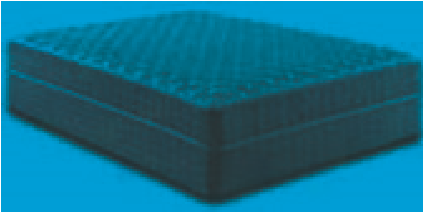 | c) Mattresses and line | • Exempted from all taxes under the 5th schedule of the East African Community Customs Management Act, 2004 |
 | d) Bedside screens | • Exempted from all taxes under the 5th schedule of the East African Community Customs Management Act, 2004 |
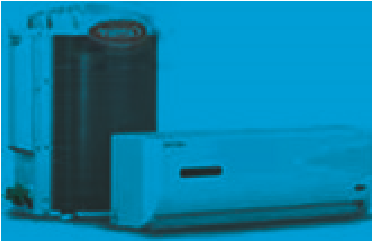 | e) Air conditioners | • Exempted from all taxes under the 5th schedule of the East African Community Customs Management Act, 2004 |
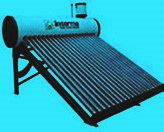 | f) Water heating equipment | • Exempted from all taxes under the 5th schedule of the East African Community Customs Management Act, 2004 |
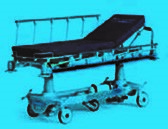 | g) Packaging material for medicines | • Exempted from all taxes under the 5th schedule of the East African Community Customs Management Act, 2004 |
 | h) Raw materials for the manufacture of medicaments | • Exempted from all taxes under the 5th schedule of the East African Community Customs Management Act, 2004 |
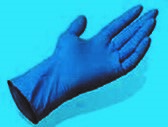 | i) Examination gloves for laboratory and medical use. | • Exempted from all taxes under the 5th schedule of the East African Community Customs Management Act, 2004. |
 | j) Hospital furniture imported by dealers for supply to licensed hospitals | • Exempted from excise duty under the Excise Duty Act. |
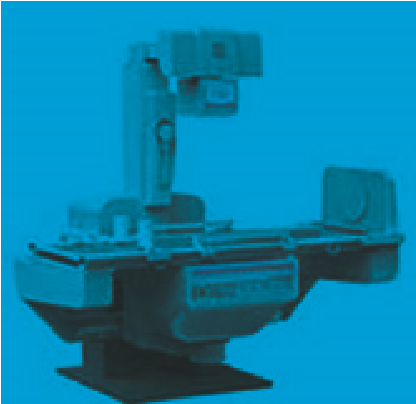 | k) X-Ray Machines for medical use. An X ray machine means an electrically powered device producing x rays for the irradiation of a human being or an animal for a therapeutic or diagnostic purpose or for industrial use | • Exempted from VAT under the VAT Act. Import duty is 0% under East African Community Common External Tariff. |
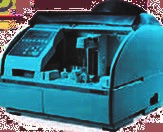 | l) Chemical Analyzers for blood analysis. A blood chemistry analyzer may be used to test for many things, such as blood cell counts, therapeutic drug monitoring, illegal drug use, blood typing protein analysis, checking thyroid function, checking for the presence of antibodies, and, when used by patients at home, for glucose or cholesterol monitoring | • Exempted from VAT under the VAT Act. Import duty is 0% under East African Community Common External Tariff |
 | j) Ophthalmic instruments and appliances. This device is used to examine the eye | • Exempted from VAT under the VAT Act. Import duty is 0% under East African Community Common External Tariff. |
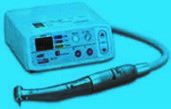 | k) Dental drill equipment. A dental drill or dentist’s drill is a small, high speed drill used during dental procedures, usually to remove decay and shape tooth structure prior to the insertion of a filling or crown. A dental drill may also be used in the cleaning and shaping of root canals during endodontic treatment, or to remove old or temporary fillings or crowns prior to the insertion of new or permanent restorations. | • Exempted from VAT under the VAT Act. Import duty is 0% under East African Community Common External Tariff. |
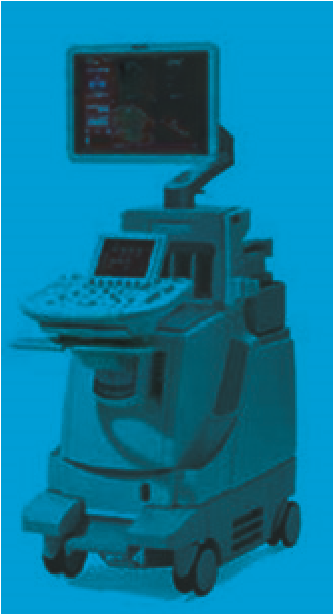 | l) Ultrasound machinery. An ultrasound machine makes images so that organs inside the body can be examined. The machine sends out high- frequency sound waves, which reflect off body structures. A computer receives the waves and uses them to create a picture. The test is done in the ultrasound or radiology department. | • Exempted from VAT under the VAT Act. Import duty is 0% under East African Community Common External Tariff. |
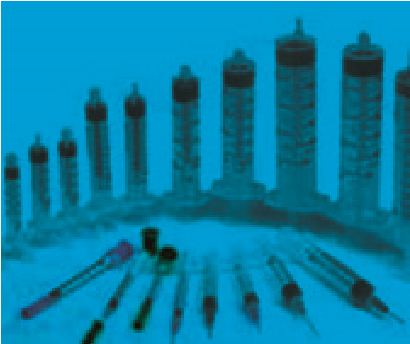 | m) Syringes. A medical device that is used to inject fluid into, or withdraw fluid from, the body. A medical syringe consists of a needle attached to a hollow cylinder that is fitted with a sliding plunger | • Exempted from VAT under the VAT Act. Import duty is 0% under East African Community Common External Tariff. |
 | n) Cardio graphic machine. A machine for recording the beating of the heart. | • Exempted from VAT under the VAT Act. Import duty is 0% under East African Community Common External Tariff. |
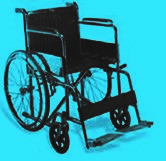 | o) Wheel chairs. A wheelchair is a manually operated or power-driven device designed primarily for use by an individual with a mobility disability for the main purpose of indoor, or of both indoor and outdoor, locomotion. | • Exempted from all taxes under the5th schedule of the East African Community Customs Management Act, 2004. |
 | p) Crutches Medical Definition of Crutch. Crutch: A wooden or metal vertical prop that helps support a disabled person while he or she is walking. Arm crutches typically are metal and have a single shaft with a projecting handgrip and a cuff that closes around the arm. Crutches usually have a nonskid rubber tip on the bottom | Exempted from all taxes under the5th schedule of the East African Community Customs Management Act, 2004 |
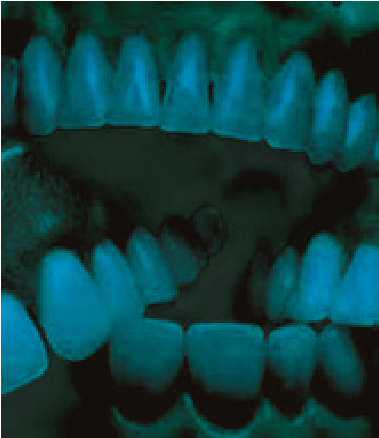 | q) Artificial parts of the body (teeth, legs, joints). Dentures, (also known as false teeth), are prosthetic devices constructed to replace missing teeth; they are supported by the surrounding soft and hard tissues of the oral cavity. Conventional dentures are removable (removable partial denture or complete denture | • Exempted from VAT under the VAT Act. Import duty is 0% under East African Community Common External Tariff. |
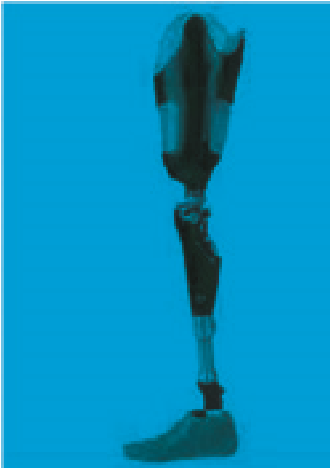 | r) A prosthesis is an artificial device/ substitute or that replaces a missing body part such as tooth, leg, arm, knee, facial bone, another joint, hip etc which may be lost through trauma, disease, or congenital conditions | • Exempted from VAT under the VAT Act. Import duty is 0% under East African Community Common External Tariff. |
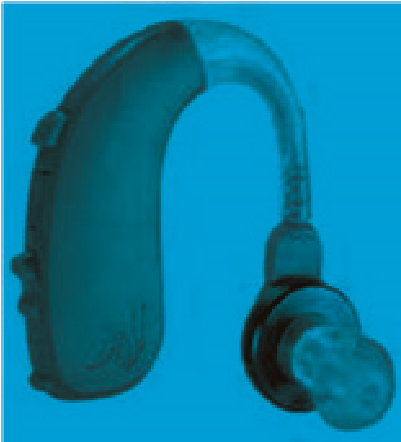 | s) Hearing aid. A hearing aid is a small electronic device that you wear in or behind your ear. It makes some sounds louder so that a person with hearing loss can listen, communicate, and participate more fully in daily activities. A hearing aid can help people hear more in both quiet and noisy situations | • Exempted from VAT under the VAT Act. Import duty is 0% under East African Community Common External Tariff. |
 | t) Medicated cotton wool | • Exempted from VAT under the VAT Act. Import duty is 0% under East African Community Common External Tariff. |
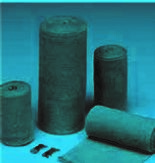 | u) Medical bandage | • Exempted from VAT under the VAT Act. Import duty is 0% under East African Community Common External Tariff. |
 | v) Refrigeration equipment for dead bodies for use in Hospital, city council or funeral home” | • Exempted from all taxes under the fifth schedule of the East African Community Customs Management Act, 2004. |
 | w) Motor boat ambulance | • Import duty is 0% under East African Community Common External Tariff and exempted from VAT under the provision of the VAT Act. |
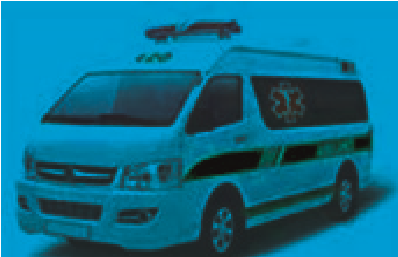 | x) Motor Vehicle ambulance | • Import duty is applicable at a rate 0% under East African Community Common External Tariff and exempted from VAT under the provision of the VAT Act |
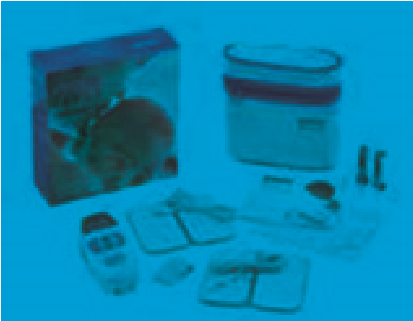 | y) Maternity (Mama) kit | • Import duty is applicable at a rate 0% instead of 25% for one year and exempted from VAT |
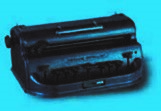 | z ) Braille machines used by the blind | • Exempted from all taxes under the fifth schedule of the East African Community Customs Management Act, 2004 |
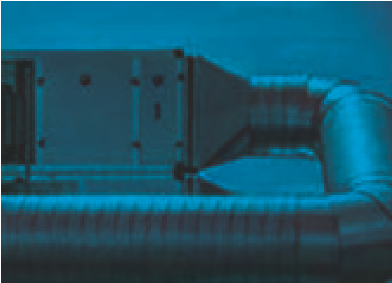 | aa) Heating, ventilating and air conditioning equipment for pharmaceutical manufacturers. | • Exempted from all taxes under the fifth schedule of the East African Community Customs Management Act, 2004. |
 | ab) Tsetse fly traps | • Exempted from all taxes under the fifth schedule of the East African Community Customs Management Act, 2004 |
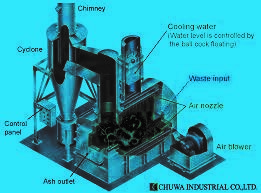 | ac) Incinerators equipment and materials | • Exempted from all taxes under the fifth schedule of the East African Community Customs Management Act, 2004 |
 | ad) The supply of imported drugs and medicines | • It is exempted from VAT under the provision of the VAT Act and attracts import duty of 0% under the EAC CET |
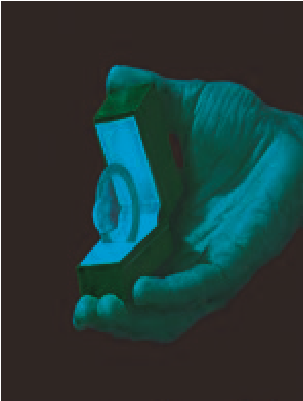 | ae) The supply of contraceptives of all forms e.g. condoms, birth control pills, family planning device | • Are exempted from VAT under the provision of the VAT Act |
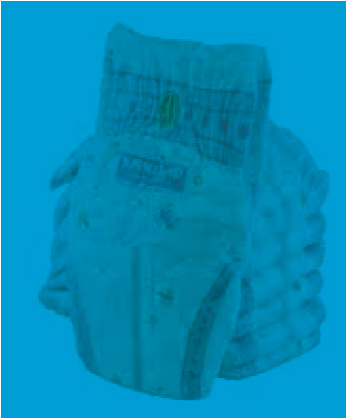 | af) The supply of diapers | • Are exempted from VAT under the provision of the VAT Act |
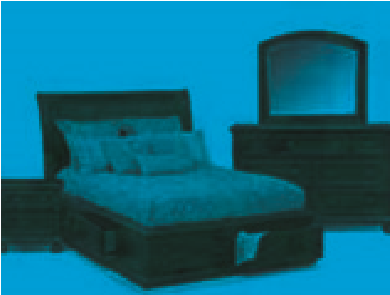 | ag) Furniture | • Exempted from all taxes under the 5th schedule of the East African Community Customs Management Act, 2004 |
 | ah) Packaging material for medicines | • Exempted from all taxes under the 5th schedule of the East African Community Customs Management Act, 2004 |
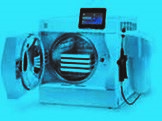 | ai) Medical Autoclaves. A medical autoclave is a device that uses steam to sterilize equipment and other objects. This means that all bacteria, viruses, fungi, and spores are inactivated. | • Exempted from VAT under the VAT Act. Import duty is 0% under East African Community Common External Tariff. |
WHAT IS REQUIRED OF YOU AS A TAX PAYER AFTER TIN REGISTRATION?
You will be required to meet your tax obligations through filing returns and making payments. RETURNS
• A tax return is the tax form on which you report your income for the year to URA and declare your profits or losses for tax purposes.
• A Tax period is the duration for which a return is required i.e. a year, month or week.
• Due date is the deadline for filing a return beyond which a person is required to pay a penalty for late filing.
ANNUAL RETURNS
| Tax Type | Provisional Return Due Date | Final Return Due Date |
| • Individual Income tax • Rental Income tax – Individual | The last day of the 3rd month after the start of the year of Income. | The last day of the 6th month after the end of the year of Income. |
| • Corporate income tax • Rental Income tax- Non individual | The last day of the 6th month after the start of the year of Income. | The last day of the 6th month after the end of the year of Income. |
| • Presumptive/Small business income tax | – | The last day of the 6th month after the end of the year of Income. |
| Trust Income tax(Chargeable in the hands of beneficiary) | The last day of the 3rd month after the start of the year of Income. | The last day of the 6th month after the end of the year of Income. |
| Trust Income tax(Chargeable in the hands other than beneficiary) | The last day of the 6th month after the start of the year of Income. | The last day of the 6th month after the end of the year of Income. |
| Partnership Income tax | – | The last day of the 6th month after the end of the year of Income. |
| MONTHLY RETURNS | ||
| • With Holding Tax • PAYE • Excise Duty(Goods & Services) | – | By the 15th day of the following month. |
Note:
The law provides for a separate quarterly return for non-resident suppliers of services deemed to be supplied in Uganda when made to non-taxable persons.
A taxable person who is providing services to a non-taxable person in Uganda and is engaged in providing services in connection to.
• Immovable property in Uganda;
• Radio or television broadcasting services received at an address in Uganda;
• Electronic Services delivered to a person in Uganda;
• Transfer, assignment, or grant of a right to use a copyright, patent, trademark, or similar right in Uganda;
• Telecommunication services other than those by a supplier of telecommunication services or services to a person who is roaming while temporarily in Uganda.
These shall be required to file returns within 15 days after the end of the three consecutive calendar months.
Advance return.
• This is a return submitted before its due date.
• During any year of income, where a taxpayer has died, is bankrupt, wound up, gone into liquidation, is about to leave Uganda permanently or any other reason the Commissioner considers appropriate, he/she may be required to file an advance return by a specified date.
• In the event that the Advance Return is not submitted by the due date, an Advance Assessment is issued. Note that the notice requesting for such a return shall be in writing specifying the due date for filing the return.
Extension of the Filing Date.
• If you are not able to file a return by the due date, you can apply for an extension to file your return providing reasons justifying the extension.
• The extension if granted will not exceed 90 days (in aggregate) and does not change the due date for payment of the tax due. Interest will, therefore, accrue on any outstanding tax liability.
If any taxpayer is dissatisfied with the Commissioner’s decision about the extension, he may challenge it under the objection and appeals procedure.
Offenses and penalties
Failure to file a return
The penalty for failure to furnish a tax return by the due date or within a further time allowed by the Commissioner to a fine not exceeding Shs. 1,000,000 and failure to furnish the return within the time prescribed by court to a fine not exceeding Shs. 2,000,000 on conviction.
False Data
The penalty for knowingly or recklessly making false or misleading statements or omitting from a statement to a tax officer, a matter or thing is a fine not exceeding two hundred currency points that is Shs. 4,000,000 or imprisonment not exceeding ten years or both on conviction.
a. What an assessment?
An assessment is a tax form showing the estimated taxable income generated and the tax payable on it including any penalty.
b. What is a self-assessment?
This is a form prepared by the taxpayer showing the taxable income generated and the tax payable on it. This is done through filing a return which may include any of the following:
(a) An Income Tax return;
(b) A Rental income return;
(c) A VAT return;
(d) An Excise Duty return;
(e) Any other self- declaration return under the tax law.
c. What is a Default assessment?
This is a tax form showing the estimated taxable income generated and the tax payable on it issued by the Commissioner due to failure to furnish a self-assessment return for any given tax period.
d. What is an Advance assessment?
This is a declaration issued if the Commissioner is satisfied that there is a risk that a taxpayer may delay, obstruct, prevent, or render ineffective payment or collection of tax that has not yet become due.
• It may be made before the date on which the taxpayer’s tax return for the period is due.
• It can be issued if a taxpayer defaults in submitting an advance return when requested by the Commissioner (with or without notice).
Note that for a Default or Advance assessment, the taxpayer’s return for the tax period shall be accepted if filed and the return shall take precedence over the assessment.
e. What is an Additional assessment?
This is an amendment of an original tax assessment issued by the commissioner for any tax period to ensure that correct tax liability is obtained.
It is made at any time, if fraud or any gross or wilful neglect has been Committed by, or on behalf of the taxpayer or new information has been discovered in relation to the tax payable for a tax period.
f. RETURN AMENDMENT
A taxpayer may amend the tax return on condition the return is not under investigation and amendment is done within 3 years from the date on which the original return was lodged by the taxpayer.
g. When is the tax payment due?
• All taxpayers are required to pay the tax liable before the end of any given tax period.
• Any unpaid tax shall be collected by the Commissioner through serving a notice of demand on the person liable.
• The taxpayer will be given at least 28 days from the date of service of the notice within which they can pay any outstanding amount specified in the demand notice.
h. How the Payment made is allocated to outstanding tax?
• If a taxpayer has any outstanding liability and pays any amount, the payment will be allocated in the order of PPI (Principal tax liability, penal tax and Interest due).
• If a taxpayer has more than one tax liability at the time a payment is made, the amount will be used to clear the oldest / earliest liability first in the same order as above (PPI).
i. Can you be able to pay tax at a later date?
Yes, a taxpayer can apply in writing to the Commissioner for an extension to pay tax at a later date.
Note that the date of payment can be extended but the payment due date does not change and thus interest shall accrue from the due date.
i. What is an objection?
An objection is a communication from a taxpayer to the Commissioner expressing dissatisfaction with either an assessment raised on him/her or any other tax decision made by the Commissioner. This is always presented in the format prescribed by the Commissioner.
ii. What are the Objection timelines?
• If you are dissatisfied with any tax decision, you may lodge an objection with the Commissioner within 45 days after receiving notice of the tax decision and wait for an objection decision within 90 days.
• You may also apply in writing to the Commissioner for an extension of time to lodge an objection and wait for the Commissioner’s decision.
• In case an objection decision has not been served within 90 days, the person objecting may, by notice in writing to the Commissioner, consider the Commissioner as having allowed his objection decision.
• The time limit for making an objection decision is waived in case a review of a taxpayer’s records is necessary for the settlement of the objection and the taxpayer is notified.
• A person dissatisfied with an objection decision may;
a) Apply to the Commissioner to resolve the dispute using alternative dispute resolution procedures. This may present other avenues for taxpayers who would like to review tax decisions issued by URA without necessarily lodging an appeal to the Tax Appeals Tribunal.
b) Lodge an application to the Tax Appeals Tribunal (TAT) for review of the objection decision.
• A person dissatisfied with a decision of the Tribunal may, within 30 days after being served with a notice of the decision, lodge an application with the High Court for review of the decision.
• A person dissatisfied with a decision of the High Court, arising from appeals to the TAT, may, within 30 days after being served with a notice of the decision or within further time as the Court of Appeal may allow, lodge an application with the Court of Appeal for review of the decision. This appeal will be on questions of law only.
• The Court of appeal shall inquire and determine the appeal expeditiously and shall declare its findings not later than 60 days from the date of filing the appeal.
• An appeal to the Supreme Court may be lodged with a certificate of the court of appeal that the matter raises questions of law of great public importance or if the Supreme Court in its overall duty to see that justice is done, considers that the appeal should be heard.
• The Supreme Court shall inquire and determine the appeal expeditiously and shall declare its findings not later than 30 days from the date of filing the appeal.”
• Where the decision maker is required to refund an amount of tax to a person as a result of a decision of a reviewing body, the tax shall be repaid with interest at the rate specified in the relevant law on the amount of the refund for the period commencing from the date the person paid the tax refunded and ending on the last day of the month in which the refund is made. Reviewing body means the Tribunal, the High Court, the Court of Appeal and the Supreme Court.
iii. Burden Of Proof
In any objection proceeding;
(a) It is upon the taxpayer to prove that the assessment is incorrect.
OR
(b) In case of a decision made to prove that the decision should not have been made or should have been made differently.
i. How is a tax collected from persons leaving Uganda permanently?
The Commissioner may issue a certificate containing particulars of the tax payable to the officer responsible for immigration control and request the Commissioner for Immigration to prevent that person from leaving Uganda until that person;
(a) Makes payment of the tax in full; or
(b) Executes a financial bond guaranteeing payment of the tax liability.
ii. What are the tax Recovery procedures?
When a person refuses or fails to comply, the taxes may be collected using various methods, such as:
• By Distress i.e. selling goods on which the assessed person has a claim in order to recover the tax.
• By Agency Notice: i.e. instructing a person who has money or other liabilities of the assessed person to pay the held amount directly to URA.
• Temporary closure of business premises.
• Charge over immovable property: The Commissioner may write, to the Registrar of Titles, and direct the Registrar that the land or buildings in the notice are the subjects of security for unpaid tax.
• Seizure of goods in cases where there is proof that the taxes due have not been paid especially in respect of the supply, removal or import of the goods.
Note: The Commissioner may write to a taxpayer, to give security by bond, deposit, or anything else that is satisfactory, for the payment of tax that may become payable, if there is reason to believe that;
(a) a taxpayer establishing a business in Uganda intends to carry on the business for a limited time only; or
(b) A taxpayer may not pay tax when it becomes payable.
i. Who is entitled to access tax information? The Commissioner is entitled to have at all times and without prior notice, full and free access to; any premises or place; any record and any data storage device. He can make an extract or copy, seize any record, data storage device that may contain data relevant to a tax obligation; and retain any record or data storage device seized for as long as it is required for determining a taxpayer’s tax obligation and liability.
ii. How is evidence obtained? The Commissioner may request any person; (a) to furnish any information or (b) to attend and be examined at the time and place designated for that purpose concerning the tax affairs of that person or any other person. For that purpose, the Commissioner may require the person to produce any record, including an electronic format, in the control of the person.
a. Who requires a tax clearance certificate?
• A taxpayer providing a passenger transport service; or a freight transport service with a goods vehicle with a capacity of two tonnes or more.
• A taxpayer providing warehousing or clearing and forwarding services.
• A taxpayer supplying goods or services to the Government.
b. What other offenses can be committed?
• Failure to furnish a return or any other document.
• Failure to comply with an agency notice or the requirements of a receiver.
• Failure to maintain proper records.
• Failure, without good cause, to comply with a request for information.
• Improper use of a taxpayer identification number.
• Making false or misleading statements.
• Obstructing an officer.
• Aiding and abetting another person to commit an offense.
• Offering bribes to officers.
c. Is there any advice to the players in the sector?
i. For Associations, mobilize your members and invite URA to sensitize them.
ii. For Taxpayers in the health sector
• Register for taxes,
• Periodically assess yourselves by filing returns and Pay liabilities due (or claim refunds) by the due dates to avoid any penalties and interest that may accrue due to noncompliance.
• Always attend URA Tax clinics whenever called upon.
• Engage URA as much as possible to avoid being misled about taxes.
d. Are there any Initiatives to train those in the health and medical sector?
• One of URA’s focus areas this Financial Year is the health sector and thus we urge the players in this sector to fully participate and attend Tax clinics and workshops when called upon.
References:
i. THE TAX PROCEDURES CODE ACT, 2014.
ii. THE INCOME-TAX ACT (IT A), CAP.340
iii. THE VALUE ADDED TAX ACT (VAT A), CAP.349
iv. THE EXCISE DUTY ACT,2014
v. THE EAST AFRICAN COMMUNITY CUSTOMS MANAGEMENT ACT


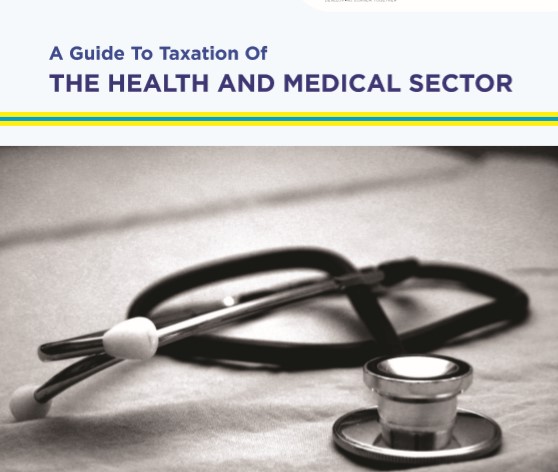
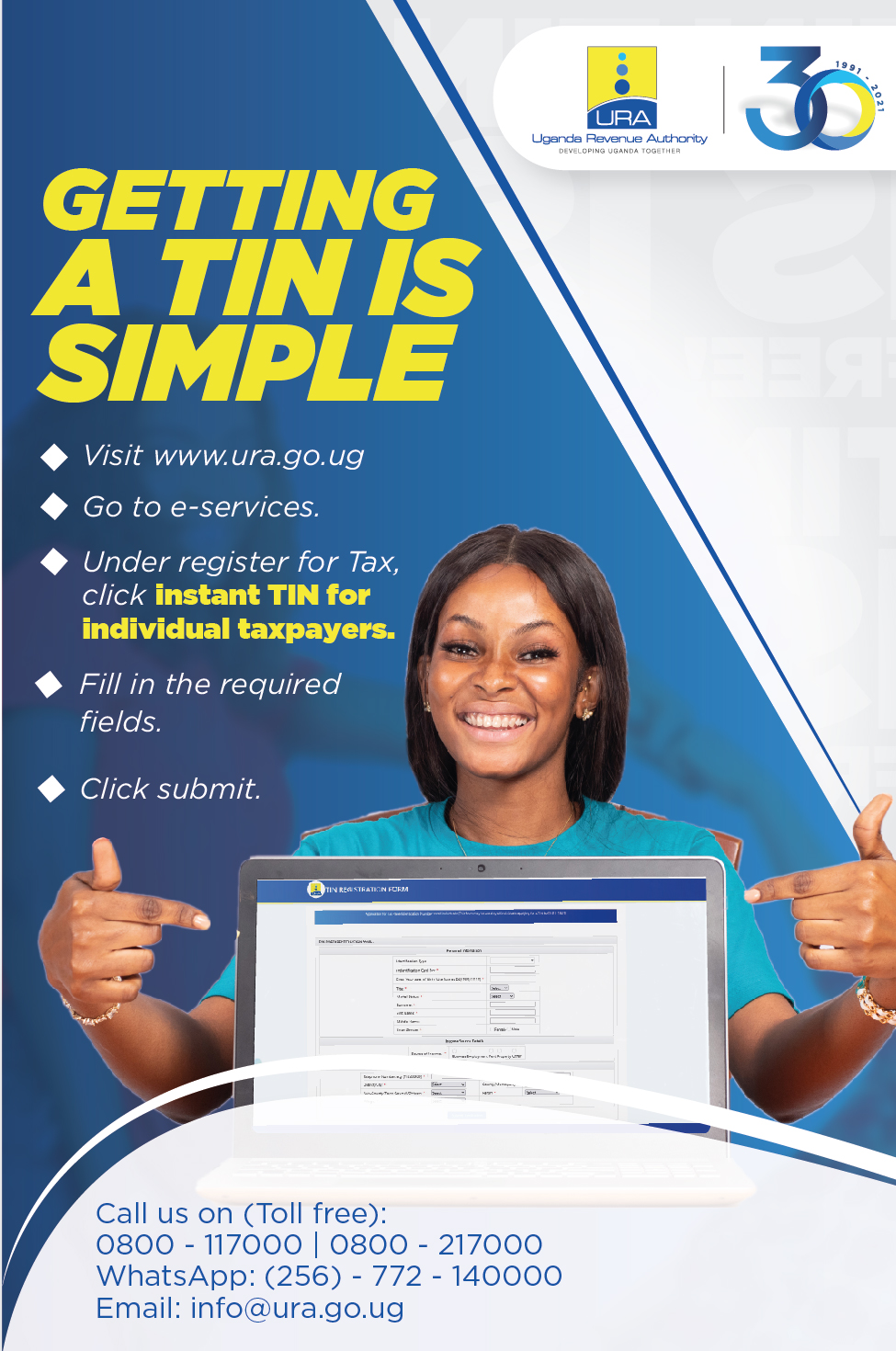



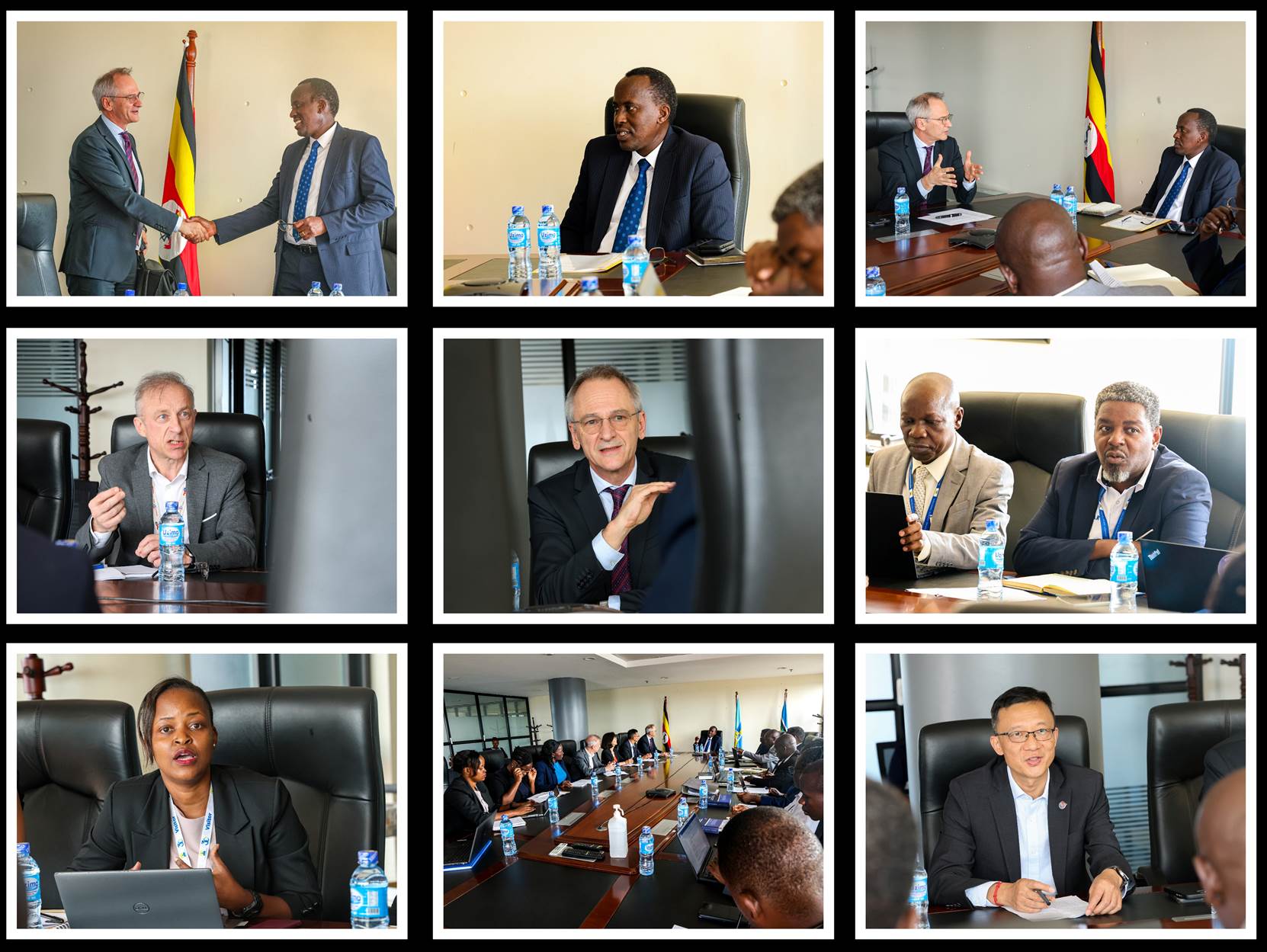
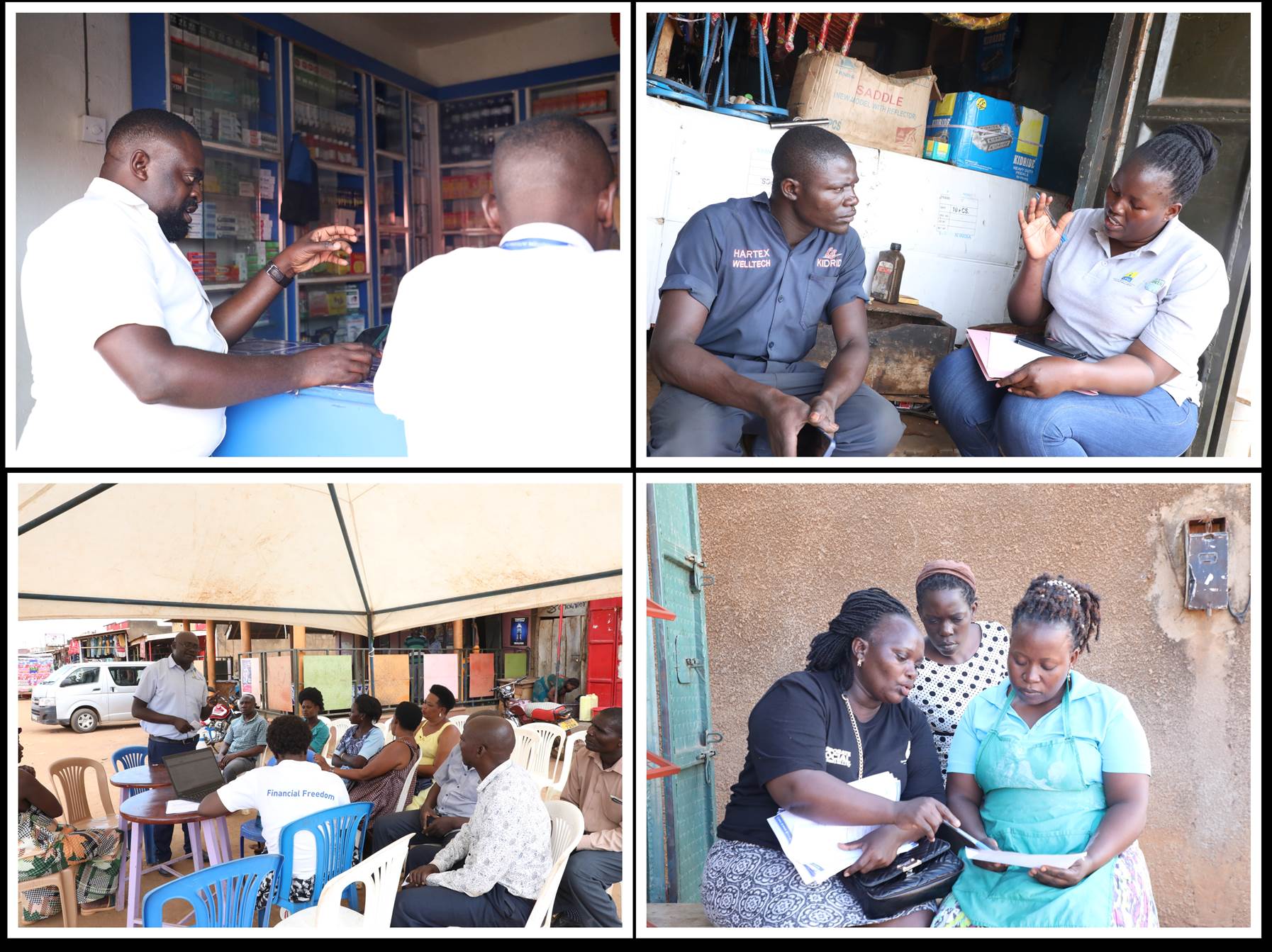
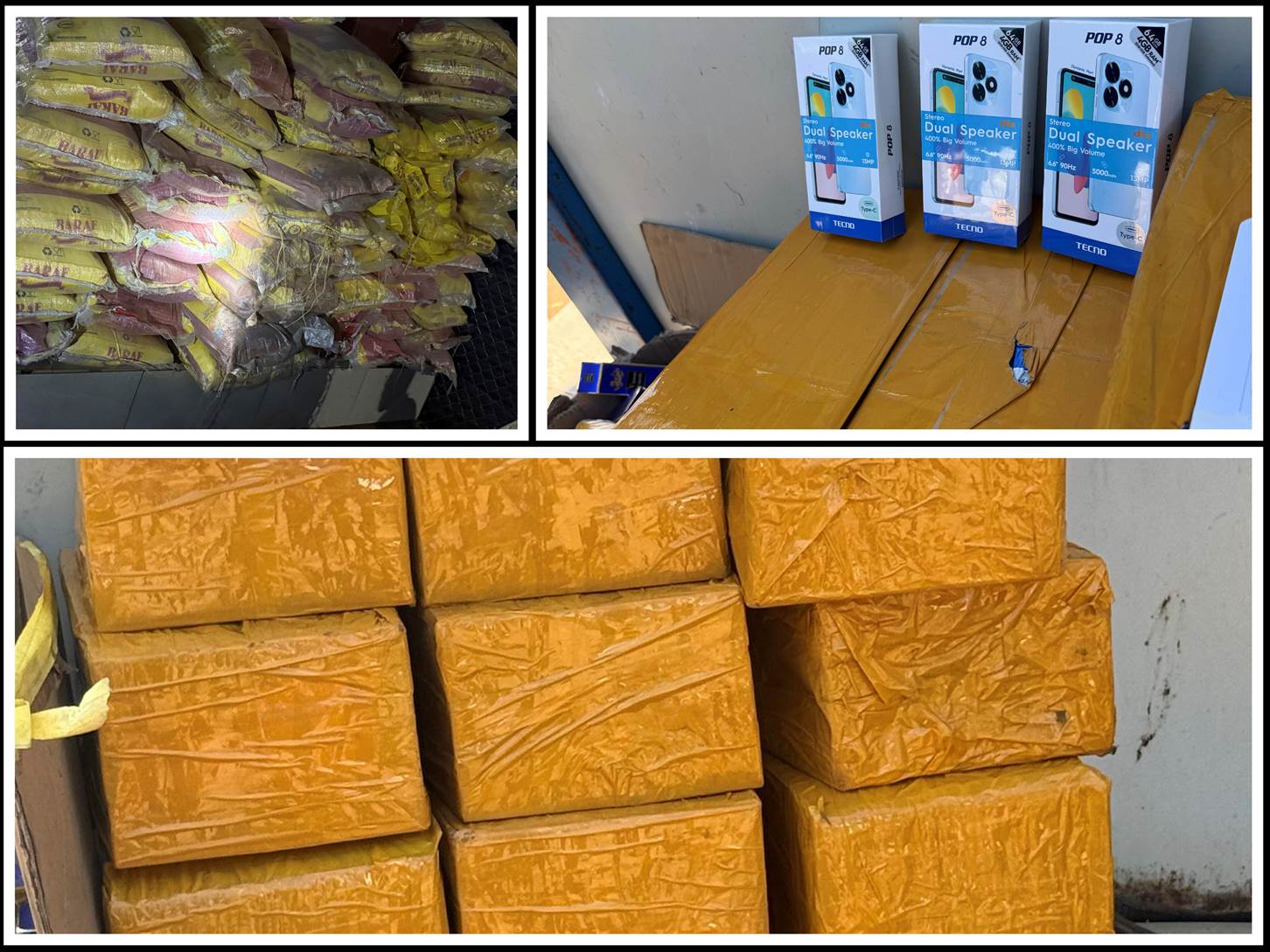

The service is Good.